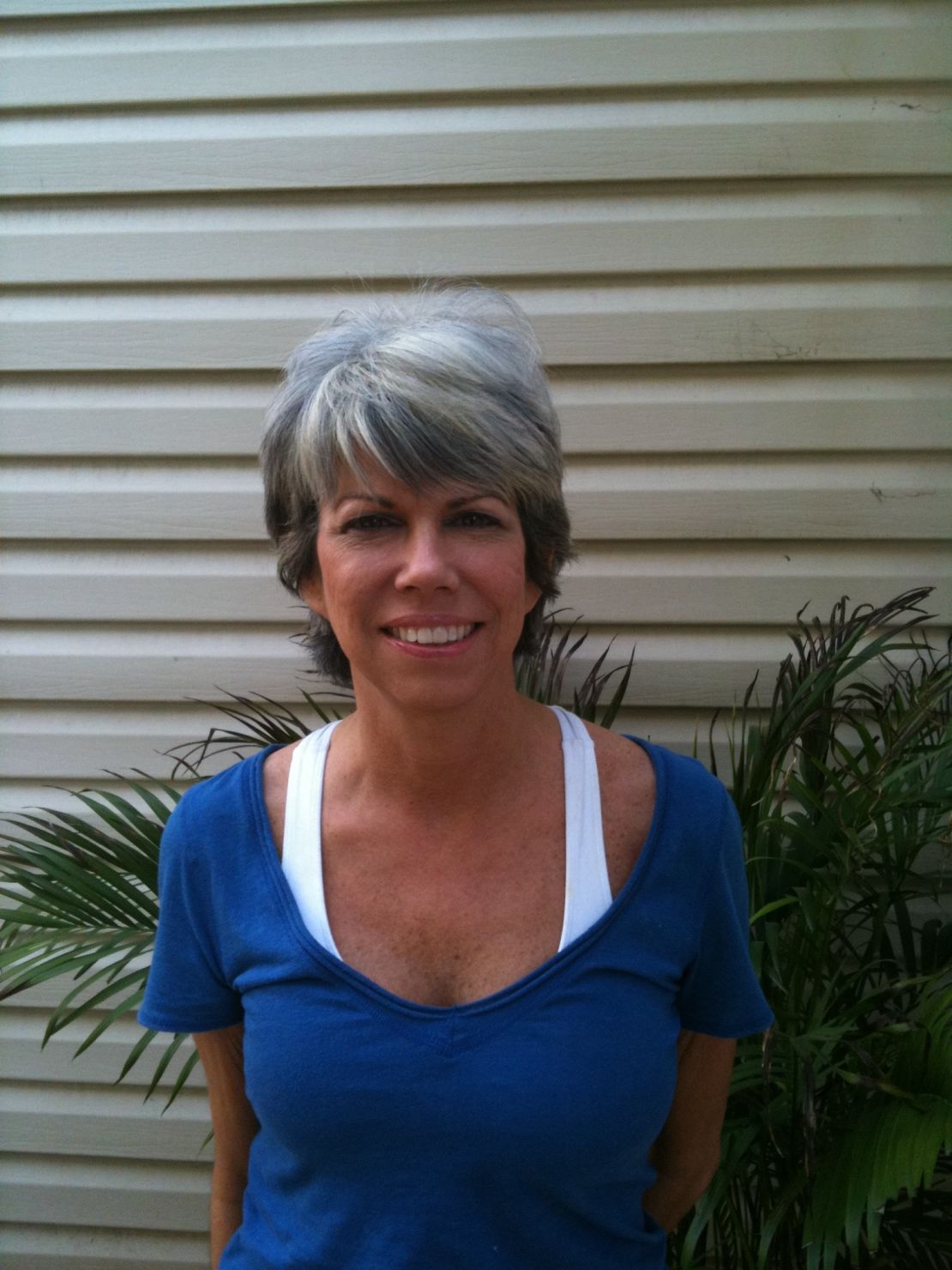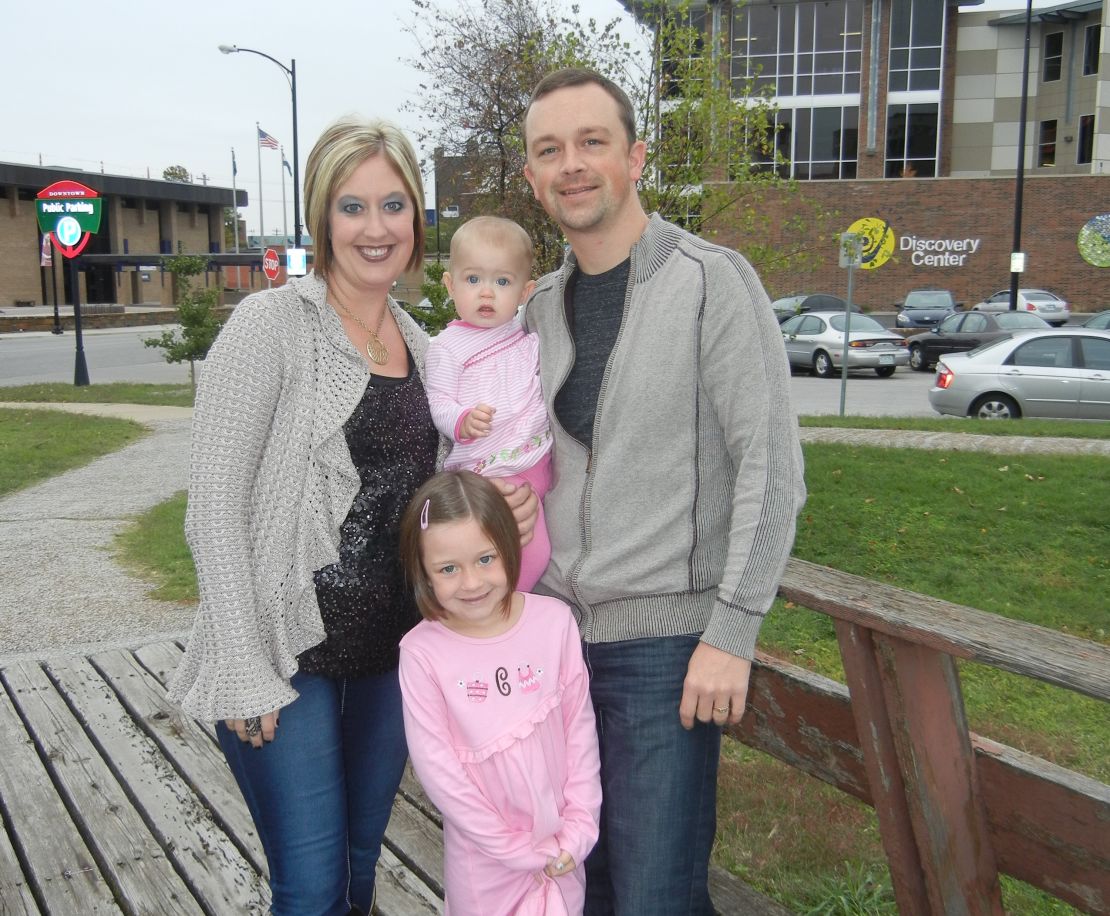Story highlights
Awareness means different things to different people
Some women with metastatic cancer feel left out of awareness efforts
Susan G. Komen for the Cure has made some recent controversial decisions
Pink is Amy Wadsworth’s favorite color. But when she entered a wig store decorated pink for October – Breast Cancer Month – in 2010, she felt that the “awareness” display was revolting.
She was undergoing chemotherapy at the time for breast cancer and had just buzzed off her hair in anticipation of losing it all.
“It doesn’t feel like a pretty pink ribbon, is what it kind of amounted to. There’s nothing pretty about this,” says Wadsworth, 31, of South Thomaston, Maine, remembering her cancer journey. “It’s traumatizing. It leaves a little hollow place.”
Now that Wadsworth is cancer-free and feeling healthy after seven rounds of chemo and a double-mastectomy, her attitude flipped. She loves the prominent appreciation for breast cancer awareness this month and hopes to one day have her own breast cancer fund to focus on holistic treatments.
Awareness is a tricky thing.
Some women who have been through breast cancer embrace the outreach activities this month, participating in races and other fundraising events.
Susan G. Komen for the Cure is perhaps the most recognizable player here, using the color pink and pink ribbons to promote various ways of raising money and “awareness.” Even President Barack Obama wore a pink bracelet during Monday night’s debate with Republican nominee Mitt Romney.
Not everyone feels part of the pinkness.
Women with metastatic cancer, which has spread beyond the breast and is more likely to be fatal, sometimes feel left out when the focus of awareness is on curable, small tumors, says Christopher Friese, an oncology nurse and assistant professor at the University of Michigan School of Nursing.
“The clear message is that breast cancer is not a single, or a simple, story,” Friese said. “Depending on the stage and the involvement of the tumor, the story could be very different for women at various stages of breast cancer.”
There are women such as Ann Silberman of Sacremento, California, who aren’t necessarily on a road to recovery.
Silberman got her breast cancer diagnosis in 2009 and underwent treatment and surgery, but the cancer spread to her liver. She runs a blog called “Breast Cancer? But Doctor …. I hate pink!” and tells people to “stay far away from anything that says awareness” and instead look to support the organization Metavivor, which focuses on metatastic cancer, StandUp2Cancer, and the American Cancer Society.
Silberman is 54, and her cancer is stage IV. Her goal is to live long enough to see her 15-year-old son go to college.

“The fact is that awareness does not stop cancer,” she said. Silberman and some others with metastatic breast cancer are passionate about funding research, believing there is too much money spent on advertising.
The other side of the argument, of course, is that awareness does stop cancer in the sense that educating women about mammography recommendations and self-checking can help detect tumors early.
For Wadsworth, awareness means “get out there and check yourself.” She discovered her own tumor; so did Silberman, who thought it was just a cyst.
But Silberman and others feel that the money needs to go toward finding out why cancer spreads, rather than “everyone making a dollar on our disease.”
In Friese’s view, awareness should focus on the gaps in knowledge that research has demonstrated exist. One study found that many women who receive breast cancer diagnoses do not have an accurate understanding of the disease or of the risk of death or recurrence after treatment.
Some underestimate how likely they are to have a recurrence or die from their tumors, while others overestimate. “What you want to do is get everyone on the same playing field,” Friese said.
What progress awareness gets
The biggest player in the breast cancer awareness world is Susan G. Komen for the Cure. On its latest financial statement, the organization claimed credit for helping reduce breast cancer mortality in the United States by 33% since 1991.
According to the latest data from the American Cancer Society, death rates from breast cancer among U.S. women have gone down 2.2% each year between 1990 and 2007, with larger declines among women younger than 50. Advances in treatment and early detection are thought to be the underlying reasons.
Despite the pink-tastic visibility of breast cancer awareness every October, the raw numbers of women with breast cancer haven’t plummeted over the past 30 years. That could be because of increased use of mammography.
The incidence of localized breast cancer, which did not spread to other organs, went up during most of the 1980s and 1990s. Localized tumor rates went down by an average of 2.6%, “and have since stabilized,” the society says.
Regional-stage disease, where the cancer has spread to surrounding tissue or lymph nodes nearby, has decreased by 1.5% a year on average since 2000.
The news isn’t terrific for metastatic breast cancer, which involves spreading to distant organs and is often fatal. For white women, the rates are stable; for African American women, the rates have been going up 0.7% a year since 1975.
Komen spent $79 million in research on metastatic breast cancer research from 2006 to 2012, which represents 15% of total research investment during that time.
The past few years have yielded some promising treatments for women with metastatic breast cancer, Friese said. The U.S. Food and Drug Administration approved Perjeta (pertuzumab) and Afinitor (everolimus), drugs that been used for other cancers, this year. Halaven (eribulin mesylate) was approved in 2010 for late-stage breast cancer.
But approval for another drug, Avastin (bevacizumab), was revoked in 2011 after the FDA deemed it not safe or effective enough.
Komen spends 25% of the money raised on research; the rest goes to local communities. Over the past 30 years, that has translated into $740 million toward breast cancer research, says Dorothy Jones, vice president of marketing.
As for advertising, which some outsiders perceive as excessive), Komen spends less than 2% of raised funds on that, Jones said. There are some 120 affiliates of Komen, and they have partners that donate media services to the organization.
When awareness gets political
For Komen, 2008 was one of the strongest years, but the organization has felt the effects of the country’s economic slump since then, with a decline of investment dollars reflective of the broader economy, Jones said.
Not to mention the controversy that brewed earlier this year when Komen decided to stop funding Planned Parenthood’s breast cancer screening programs and then reversed that decision three days later. NPR reported in June that participation in several Komen races declinedsince the decision. In August, two of the organization’s leaders left their posts.
Affiliations with certain companies has also attracted negative attention for the organization.
Komen accepted more than $4.2 million from KFC in 2010, earning a part of the sales of fried or grilled chicken buckets. KFC restaurants had served up special pink buckets that year, with 50 cents of each one going to Komen. This arrangement came under fire for promoting unhealthy foods that could potentially increase the risk of cancer.
But Komen drew the line with donations when the adult entertainment site Pornhub.com promised to give 1 cent for every 30 views of specific breast videos. Komen wrote a cease and desist order, Jones said, noting also that the website is apparently not based in the United States.
“It was an organization globally that we didn’t feel aligned with our values, and (we) could not accept funds from them,” Jones said. “When you can’t verify the efficacy of those dollars, where they’re coming from, we don’t associate with those types of organizations.”
The sexualization of breast cancer awareness is something that bothers Tory Zellick, 28, of Chico, California.
She took care of her mother during the final three and a half years of her battle with breast cancer. Zellick has been noticing awareness logos that feature pink ribbons between cleavage and actual breasts.
Zellick, author of “The Medical Day Planner: The Guide to Help Navigate the Medical Maze,” appreciates that most people genuinely want to help. At the same time, she’s disturbed by the idea that a sophomore boy in high school with raging hormones would be wearing a wristband with a slogan such as “save the boobies.”
“One day he may remember this experience and have possibly have a clearer understanding of what breast cancer and breast cancer awareness is,” she said. “I just would like to see more education with the process.”
Pink can be positive

Melody Wasson, 33, of Springfield, Missouri, is a big fan of awareness. She had breast cancer at 28 and found out she is a carrier for the BRCA 1 genetic mutation, an inherited trait that greatly increases the risk of developing the condition. She had a double mastectomy to decrease the chance of a recurrence in the healthy breast. Wasson blogs about her experience at My Fight Against Breast Cancer.
She knows that either or both of her young daughters could inherit the gene, but she doesn’t want to get them tested this early in life – it would only spark fear on her part. Instead, she’ll inform them about what it means – already her 6-year-old knows her mommy survived breast cancer.
“I want my daughter to full-on know what it means to be a survivor,” she said. “I want her to know when she sees that pink ribbon what that means.”
Awareness for Wasson means “being your own advocate” – doing self-exams and making the decisions that are best for you if you get a diagnosis. She’s active in the Breast Cancer Foundation of the Ozarks, an organization that provides financial assistance and emotional support to anyone affected by breast cancer, as well as education. She has participated in the Susan G. Komen Race for the Cure for the past four years.
For all of the women who speak out about their individual patient experiences, write blogs and clamor for more support and funding, and there are others who would rather deal with their disease in private, Friese said. Not everyone wants to be out in public advocating.
“There’s probably a group of women for whom the prominence of the topic that is not something that they cherish,” Friese said.
Wadsworth remembers in October of 2010, she didn’t always want to be thinking about her cancer, but pink was everywhere, reminding her. “My body was different, my breast had huge scars, I was bald, my life was (a)whirlwind, I felt like I was completely out of control, I really had to have faith that everything happens for a reason,” she wrote in an e-mail.
Today, she loves awareness and feels well enough to help others in need. Working as a massage therapist, she donates a portion of every session this month to Caring Connections, a nonprofit organization that helped her during her battle with breast cancer.
She still loves pink and tries to maintain a light-hearted attitude. One of her shirts says “Yes, they are fake. The real ones tried to kill me.”



